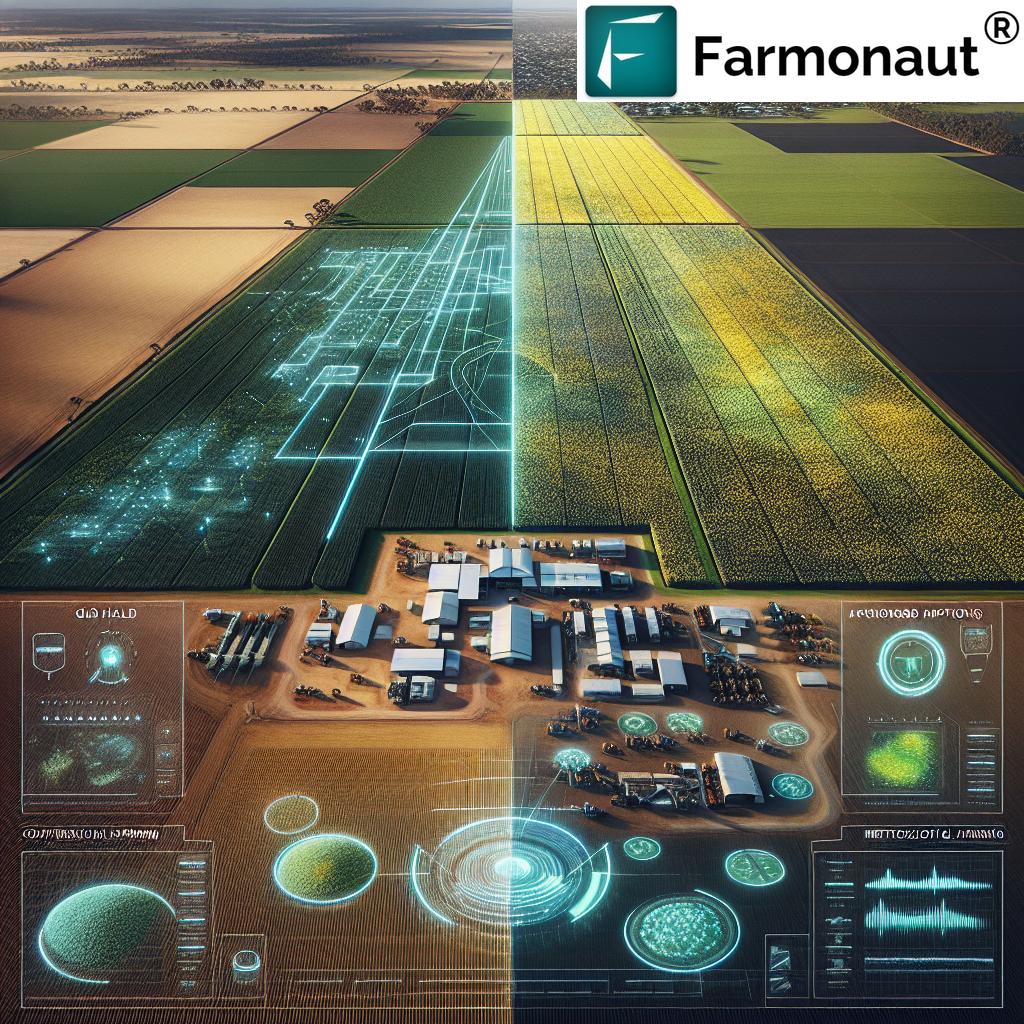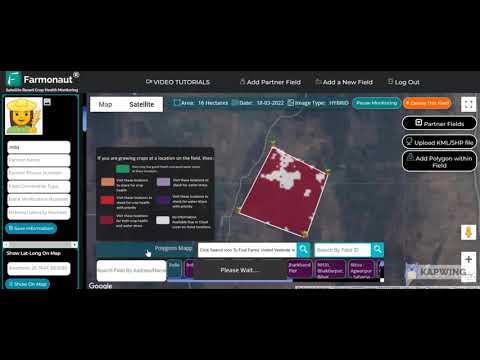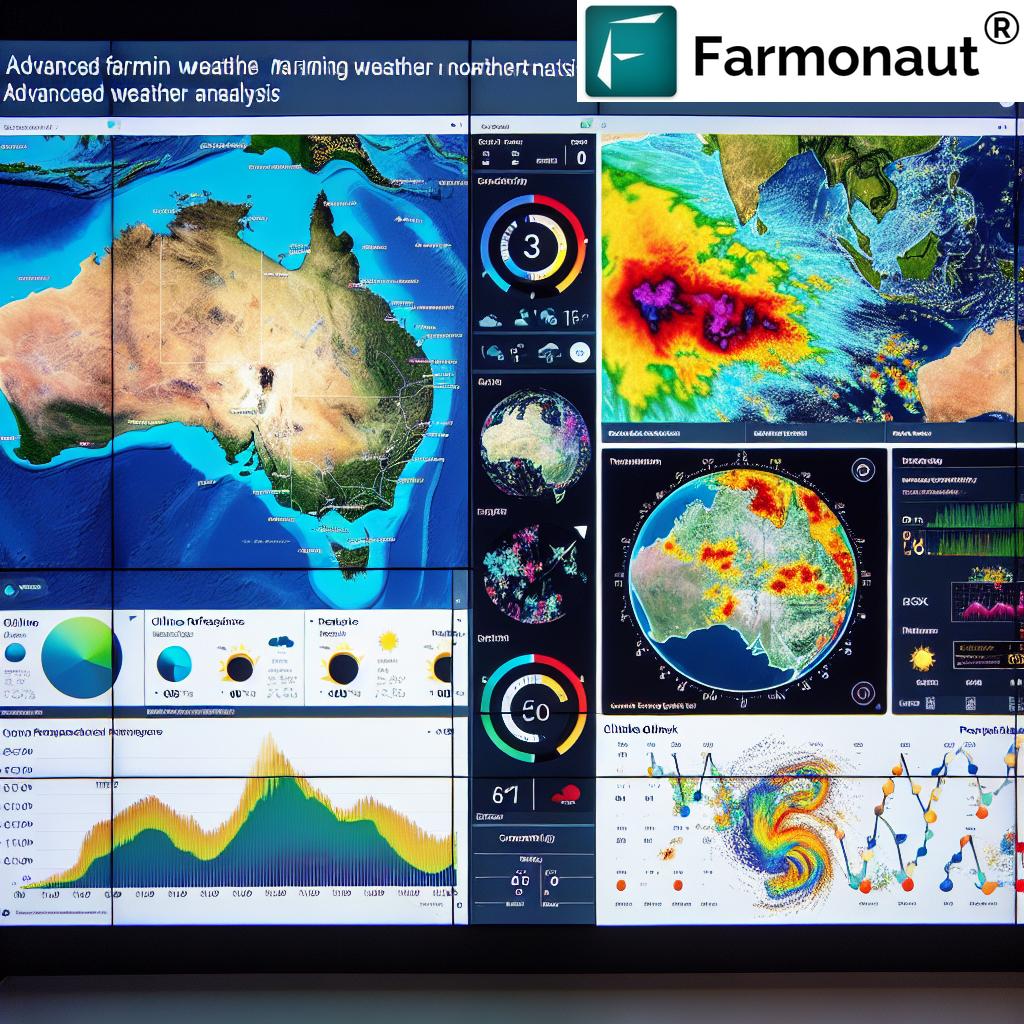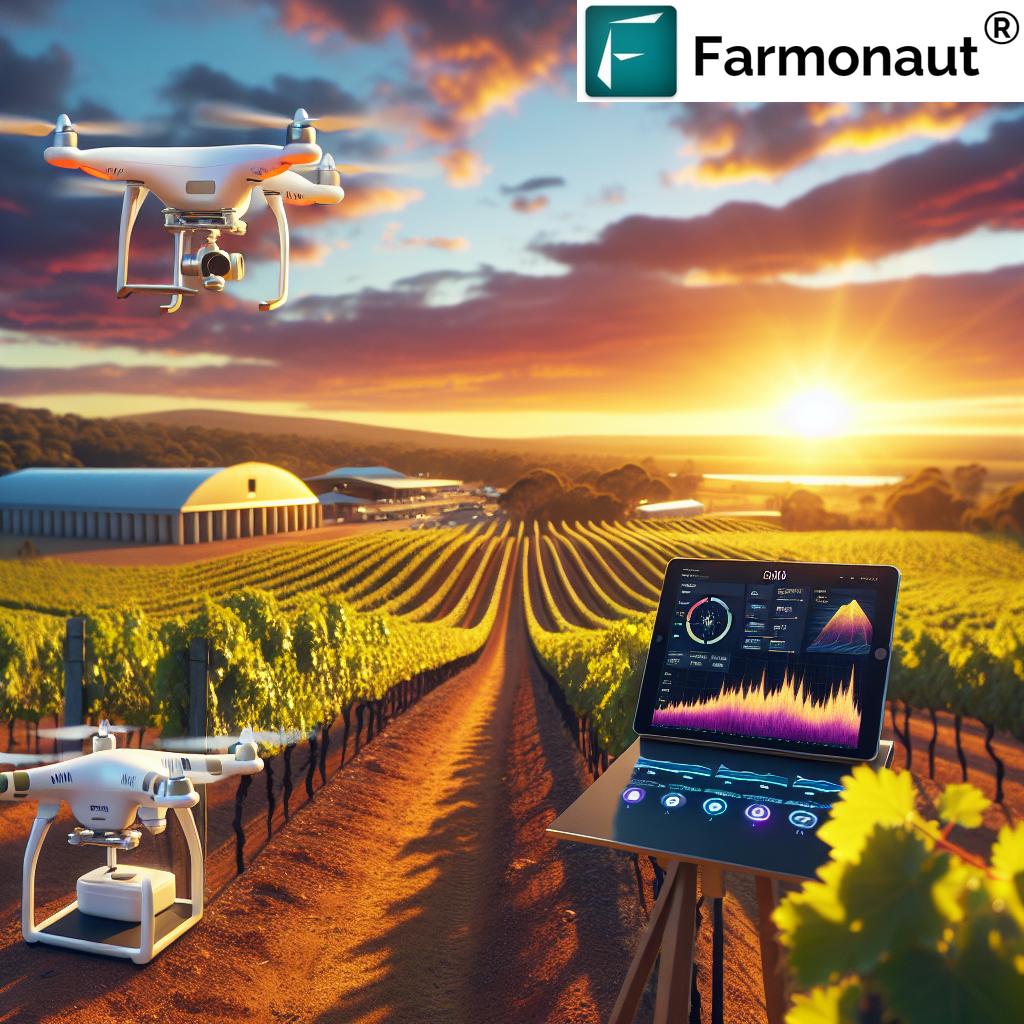Revolutionizing Western Australian Agriculture: Microwave Tech for Sustainable Weed Control and Precision Farming
“A $900,000 investment in Western Australia is pioneering microwave technology for sustainable weed control in agriculture.”
In the vast expanses of Western Australia, a quiet revolution is taking place in the world of agriculture. As we delve into the innovative realm of microwave technology for sustainable weed control and precision farming, we find ourselves at the forefront of a transformative era in crop management and agricultural practices. This groundbreaking approach not only promises to reshape how we tackle persistent weed issues but also heralds a new age of environmentally friendly crop management techniques.
At Farmonaut, we’re excited to explore these cutting-edge solutions that are set to redefine the landscape of modern farming. Our commitment to making precision agriculture accessible and affordable aligns perfectly with the innovative spirit driving these advancements in Western Australian agriculture.

The Dawn of Microwave Weed Control
The agricultural sector in Western Australia is witnessing a paradigm shift with the introduction of microwave technology for weed control. This innovative approach is not just a fleeting trend but a well-researched and funded initiative, as evidenced by the substantial $900,000 investment. But what makes microwave weed control so promising?
- Precision Targeting: Microwave technology allows for precise targeting of weeds without affecting surrounding crops.
- Environmentally Friendly: Unlike chemical herbicides, microwave weed control leaves no residual impact on the soil or water resources.
- Reduced Resistance: Weeds are less likely to develop resistance to physical methods like microwaving compared to chemical treatments.
This technology aligns perfectly with the growing demand for sustainable agriculture technology and environmentally friendly crop management practices. As we at Farmonaut continue to develop our satellite-based farm management solutions, we see great potential in integrating such innovative technologies into our platform.
Microwave Technology: How It Works
Microwave weed control operates on a simple yet effective principle. The technology uses high-frequency electromagnetic waves to heat the water molecules within weed plants. This rapid heating causes the plant cells to rupture, effectively killing the weed from the inside out. The beauty of this method lies in its specificity – it targets only the plants it comes into direct contact with, leaving the surrounding soil and beneficial organisms unharmed.
Key aspects of microwave weed control include:
- Non-Chemical Approach: Eliminates the need for potentially harmful herbicides.
- Immediate Effect: Weeds start wilting almost instantly after treatment.
- Weather Independent: Can be used regardless of wind or rain conditions.
- Soil Health Preservation: Doesn’t disturb soil structure or microbial life.
This technology represents a significant leap forward in sustainable agriculture technology, offering a solution that is both effective and environmentally conscious.
Integrating Microwave Tech with Precision Farming
The true power of microwave weed control is realized when integrated with precision farming techniques. This combination creates a synergy that enhances overall farm efficiency and sustainability. At Farmonaut, we understand the importance of such integrations in modern agriculture.
Precision farming techniques complementing microwave weed control:
- Satellite Mapping: Our satellite-based crop health monitoring can identify areas with high weed density, guiding the precise application of microwave treatment.
- AI-Driven Decision Making: Farmonaut’s Jeevn AI advisory system can help farmers decide the optimal timing and areas for microwave weed control application.
- Data Analytics: By analyzing treatment effectiveness over time, farmers can continually refine their weed management strategies.
This integration of microwave technology with precision farming techniques represents a significant step towards more sustainable and efficient agricultural practices.
Beyond Weed Control: Innovative Pest Management
“Microwave technology in agriculture offers dual benefits: efficient weed management and potential snail pest control applications.”
The applications of microwave technology in agriculture extend beyond weed control. Researchers are exploring its potential in managing other agricultural pests, particularly snails. This dual-purpose approach makes microwave technology an even more valuable tool in the farmer’s arsenal.
Potential applications in pest management:
- Snail Control: Microwaves can effectively eliminate snails without leaving chemical residues.
- Seed Treatment: Microwave treatment of seeds can eliminate pathogens and improve germination rates.
- Soil Sterilization: Targeted microwave application can help manage soil-borne diseases.
These innovative pest management techniques align well with the growing trend towards environmentally friendly crop management and sustainable agriculture technology.
The Role of Agricultural Mapping Technology
Agricultural mapping technology plays a crucial role in maximizing the efficiency of microwave weed control and other precision farming techniques. At Farmonaut, we specialize in providing advanced mapping solutions that can significantly enhance the effectiveness of these innovative farming practices.
Key benefits of agricultural mapping in microwave weed control:
- Precise Weed Identification: Our satellite imagery can detect weed infestations with high accuracy.
- Targeted Treatment: By mapping weed distributions, farmers can apply microwave treatments only where needed, saving time and resources.
- Progress Tracking: Regular mapping allows farmers to monitor the effectiveness of treatments over time.
- Resource Optimization: Mapping helps in planning the most efficient routes for microwave treatment equipment.
By leveraging Farmonaut’s advanced mapping technology, farmers can ensure that their microwave weed control efforts are as effective and efficient as possible, contributing to overall farm productivity and sustainability.
Explore Farmonaut’s API for advanced agricultural mapping
Economic Implications and Agribusiness Impact
The adoption of microwave technology for weed control and its integration with precision farming techniques has significant economic implications for the agricultural sector, particularly in Western Australia. This innovative approach is not just environmentally friendly; it also promises substantial economic benefits for farmers and agribusinesses.
Economic advantages of microwave weed control:
- Reduced Input Costs: Less reliance on expensive chemical herbicides.
- Improved Crop Yields: More effective weed management can lead to higher crop productivity.
- Long-term Soil Health: Preserving soil quality can result in sustained productivity over years.
- Potential Premium Markets: Produce from chemical-free farming may command higher prices in certain markets.
For agribusinesses, investing in microwave technology and associated precision farming tools represents a forward-thinking approach. It positions them at the forefront of agricultural innovation, potentially opening new markets and enhancing their competitive edge.

Environmental Benefits and Sustainability
The shift towards microwave weed control and precision farming techniques in Western Australia is not just about technological advancement; it’s a significant step towards more sustainable agricultural practices. This approach aligns perfectly with global efforts to reduce the environmental impact of farming while maintaining or improving productivity.
Key environmental benefits:
- Reduced Chemical Use: Minimizes the release of herbicides into the environment.
- Soil Conservation: Helps maintain soil structure and biodiversity.
- Water Quality Protection: Fewer chemicals mean less runoff into water systems.
- Energy Efficiency: When combined with precision techniques, it can lead to more efficient use of resources.
At Farmonaut, we’re committed to promoting sustainable agriculture through our technology. Our platform’s ability to monitor crop health and provide precise data complements these environmentally friendly practices, helping farmers make informed decisions that benefit both their operations and the planet.
Learn more about Farmonaut’s API Developer Docs
Challenges and Future Prospects
While the future of microwave technology in agriculture looks promising, it’s important to acknowledge the challenges and consider the future prospects of this innovative approach.
Current challenges:
- Initial Investment: The cost of microwave equipment can be high.
- Technology Refinement: Ongoing research is needed to optimize efficiency and application methods.
- Farmer Adoption: Educating and encouraging farmers to adopt new technologies can be slow.
- Regulatory Framework: Developing appropriate regulations for this new technology.
Future prospects:
- Integrated Pest Management: Expanding microwave technology to manage various pests and diseases.
- Autonomous Systems: Development of self-driving microwave weed control units.
- Precision Agriculture Integration: Further integration with AI and IoT for more efficient farming.
- Global Adoption: As technology proves successful, it could be adopted in other agricultural regions worldwide.
As we look to the future, the potential for microwave technology in agriculture is vast. At Farmonaut, we’re excited to be part of this agricultural revolution, continuously evolving our platform to support and complement these innovative farming practices.
Comparison of Weed Control Methods in Western Australian Agriculture
| Weed Control Method | Environmental Impact | Cost Efficiency (1-5) | Effectiveness (1-5) | Compatibility with Precision Farming |
|---|---|---|---|---|
| Chemical Herbicides | High | 3 | 4 | Medium |
| Mechanical Tillage | Medium | 2 | 3 | Low |
| Microwave Technology | Low | 4 | 4 | High |
| Integrated Weed Management | Medium | 4 | 5 | High |
| Biological Control | Low | 3 | 3 | Medium |
This comparison clearly illustrates the advantages of microwave technology in weed control, particularly its low environmental impact and high compatibility with precision farming techniques.
The Role of Digital Agriculture in Modern Farming
As we explore the impact of microwave technology and precision farming in Western Australia, it’s crucial to understand the broader context of digital agriculture. This technological revolution is transforming every aspect of farming, from planting to harvest, and it’s where Farmonaut’s expertise comes into play.
Key aspects of digital agriculture:
- Data-Driven Decision Making: Utilizing big data and analytics to inform farming practices.
- IoT in Agriculture: Sensors and connected devices providing real-time farm data.
- AI and Machine Learning: Predictive analytics for crop yields, pest outbreaks, and weather patterns.
- Blockchain in Supply Chain: Enhancing traceability and transparency in agricultural supply chains.
Farmonaut’s platform integrates seamlessly with these digital agriculture trends, offering farmers powerful tools to monitor crop health, predict yields, and optimize resource use. Our satellite-based solutions and AI-driven advisory systems are at the forefront of this digital revolution in agriculture.
Impact on Broadacre Farming in Western Australia
Western Australia’s vast broadacre farms stand to benefit significantly from the integration of microwave weed control and precision farming techniques. These innovations are particularly well-suited to the large-scale operations typical of this region.
Benefits for broadacre farming:
- Efficient Large-Scale Weed Management: Microwave technology can cover large areas more efficiently than traditional methods.
- Reduced Labor Costs: Automation and precision reduce the need for manual labor in weed control.
- Improved Crop Uniformity: More effective weed control leads to more uniform crop growth across large fields.
- Data-Driven Farming: Integration with Farmonaut’s satellite monitoring allows for precise management of vast acreages.
The combination of microwave technology and precision farming tools like those offered by Farmonaut can revolutionize broadacre farming, making it more sustainable and productive.
The Future of Farm Management Systems
As we look towards the future of agriculture in Western Australia and beyond, it’s clear that modern farm management systems will play a pivotal role. These systems, including Farmonaut’s platform, are evolving to integrate new technologies like microwave weed control and advanced precision farming techniques.
Key features of future farm management systems:
- Comprehensive Integration: Seamless integration of various technologies including satellite monitoring, IoT devices, and AI.
- Real-Time Decision Support: Providing farmers with instant insights and recommendations based on current farm conditions.
- Predictive Analytics: Using historical data and AI to forecast crop yields, pest outbreaks, and optimal harvesting times.
- Autonomous Operations: Increasing automation in various farming tasks, including weed control and harvesting.
At Farmonaut, we’re continually evolving our platform to meet these future needs, ensuring that farmers have access to cutting-edge tools for efficient and sustainable farm management.
Conclusion: A New Era in Western Australian Agriculture
The integration of microwave technology for weed control, combined with advanced precision farming techniques, marks the beginning of a new era in Western Australian agriculture. This innovative approach not only addresses the persistent challenge of weed management but also aligns with the growing global emphasis on sustainable and environmentally friendly farming practices.
As we’ve explored throughout this article, the benefits of this technological revolution are far-reaching:
- Enhanced environmental sustainability through reduced chemical use
- Improved crop yields and farm efficiency
- Economic advantages for farmers and agribusinesses
- Integration with digital agriculture trends for comprehensive farm management
At Farmonaut, we’re excited to be part of this agricultural transformation. Our satellite-based farm management solutions complement these innovative technologies, providing farmers with the tools they need to make informed decisions and optimize their operations.
As Western Australian agriculture continues to evolve, the combination of microwave weed control, precision farming techniques, and advanced farm management systems like Farmonaut’s platform will play a crucial role in shaping a more sustainable and productive future for the industry.
FAQs
- Q: How does microwave weed control work?
A: Microwave weed control uses high-frequency electromagnetic waves to heat water molecules within weed plants, causing cell rupture and effectively killing the weeds without affecting the surrounding soil or crops. - Q: Is microwave weed control safe for the environment?
A: Yes, microwave weed control is considered environmentally friendly as it doesn’t use chemicals, doesn’t disturb soil structure, and doesn’t leave residues that could harm beneficial organisms. - Q: How does Farmonaut’s technology complement microwave weed control?
A: Farmonaut’s satellite-based crop monitoring and AI advisory systems can help identify areas with high weed density and guide the precise application of microwave treatments, enhancing overall efficiency. - Q: Can microwave technology be used for pest control other than weeds?
A: Yes, research is ongoing into using microwave technology for controlling other pests, particularly snails, and for seed treatment to eliminate pathogens. - Q: What are the main challenges in adopting microwave weed control technology?
A: The main challenges include high initial investment costs, the need for technology refinement, farmer education and adoption, and developing appropriate regulatory frameworks.




















